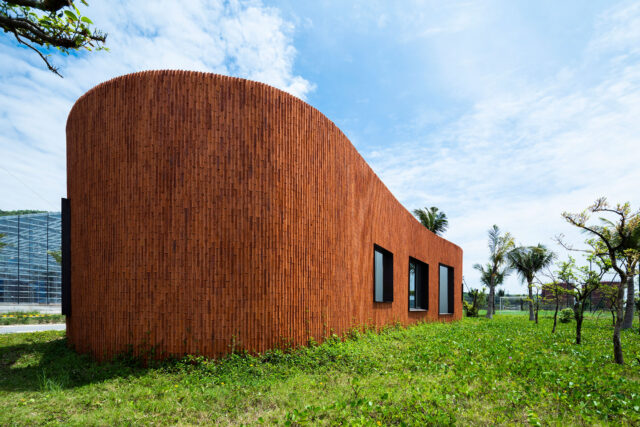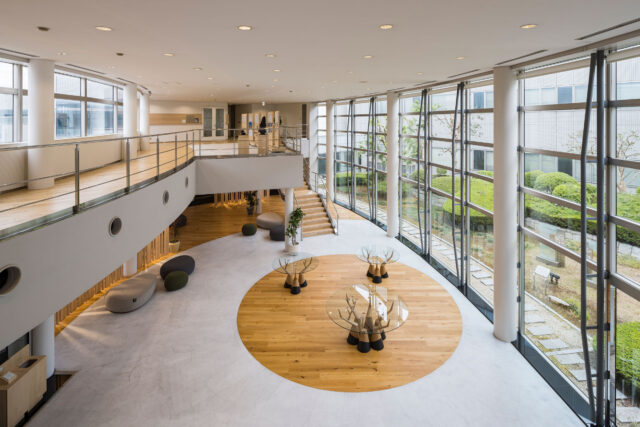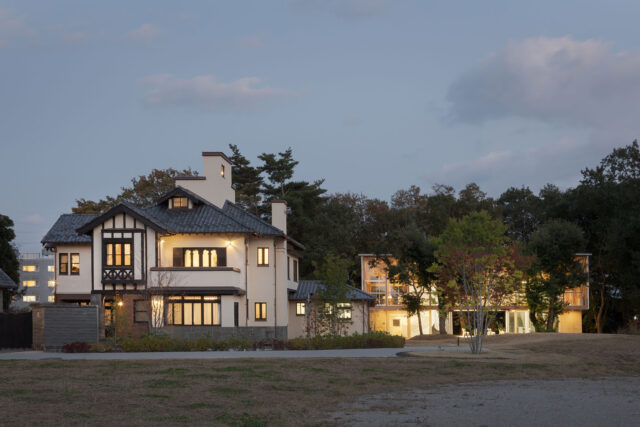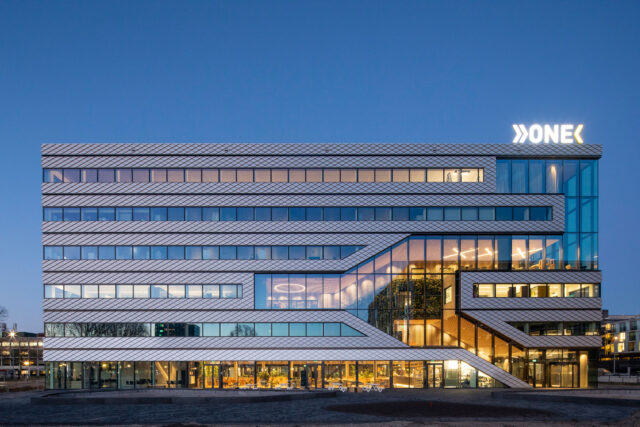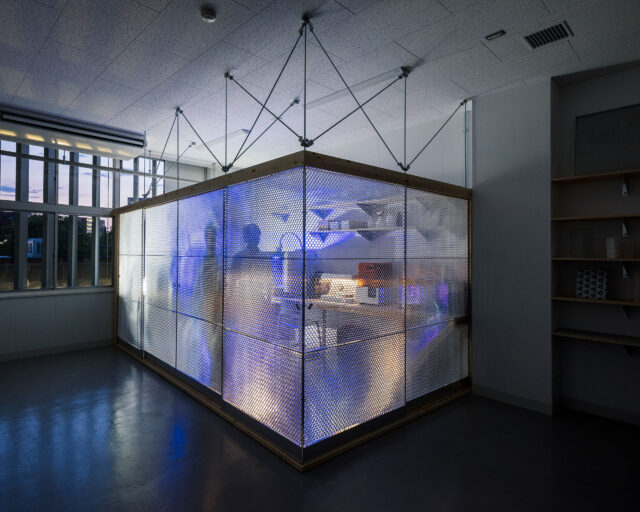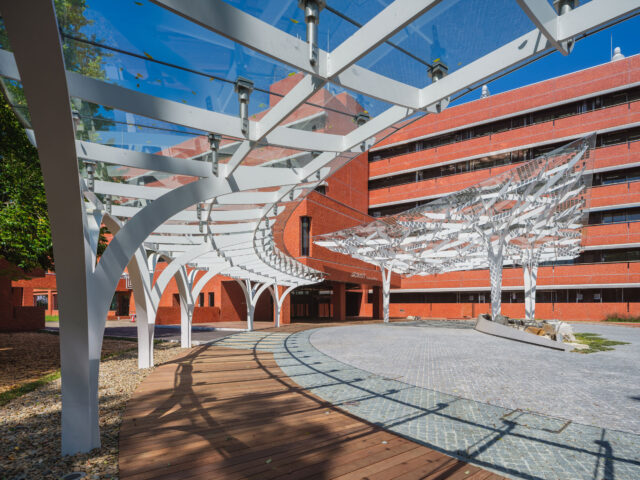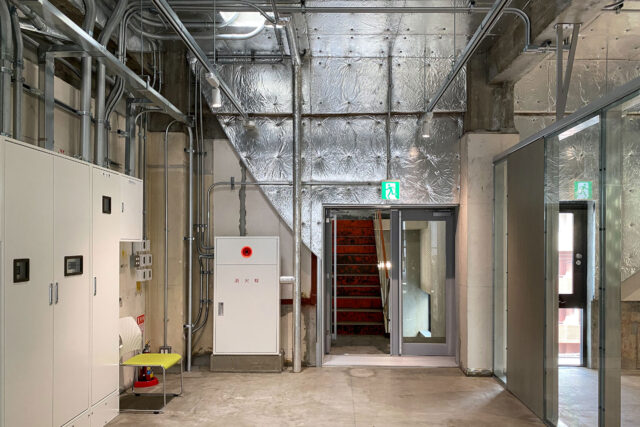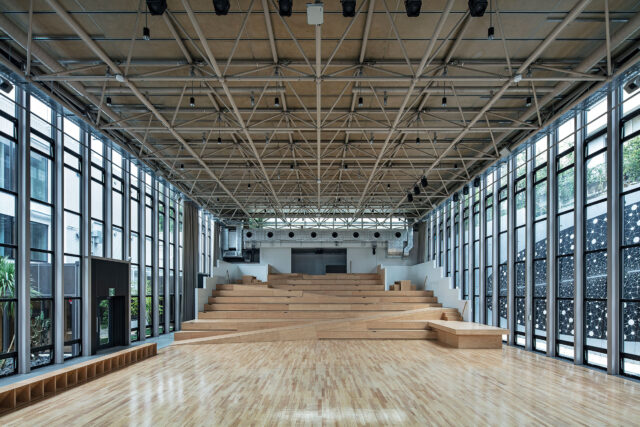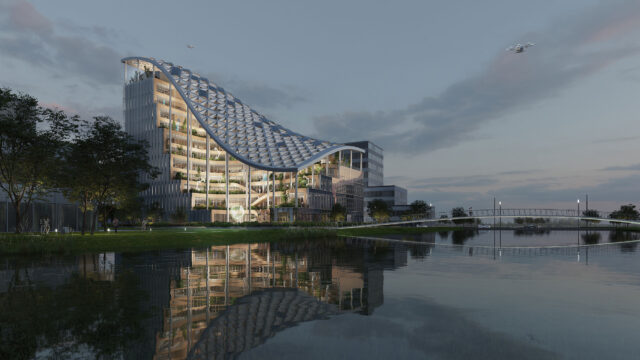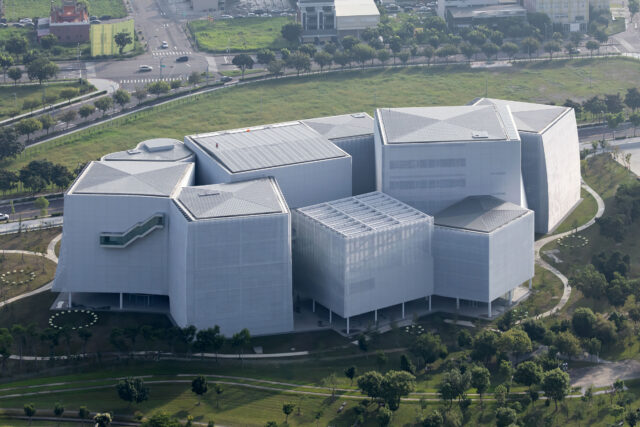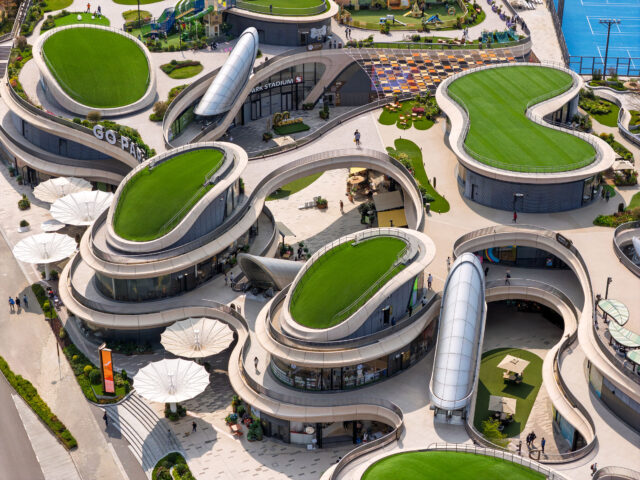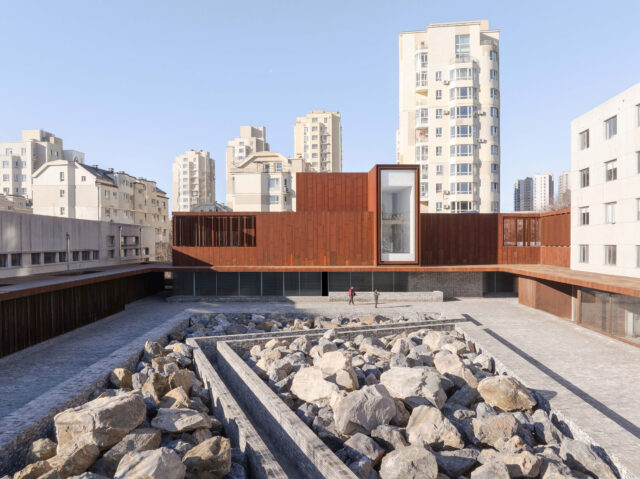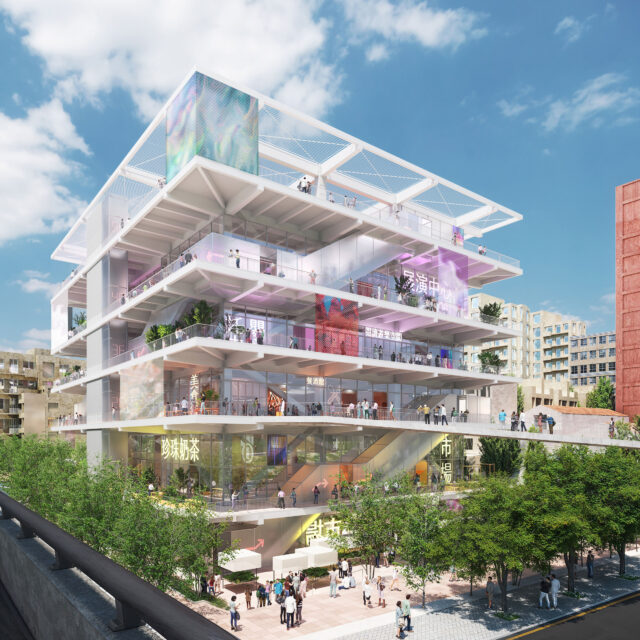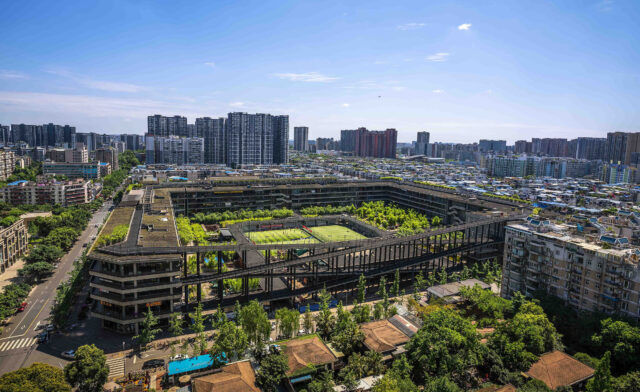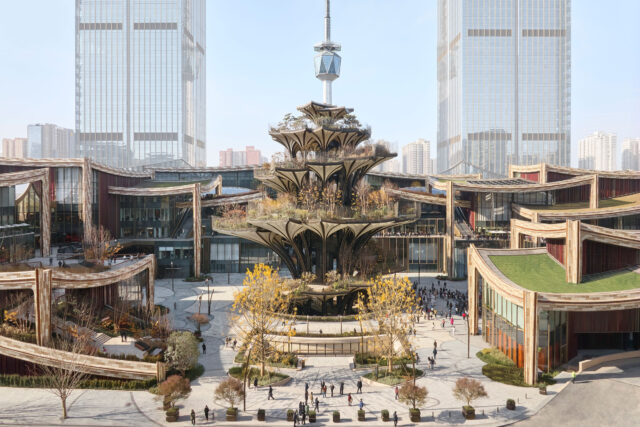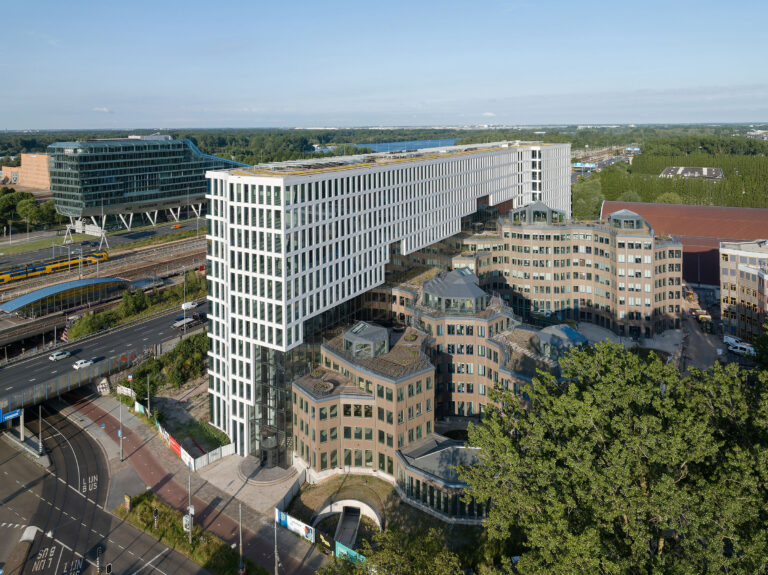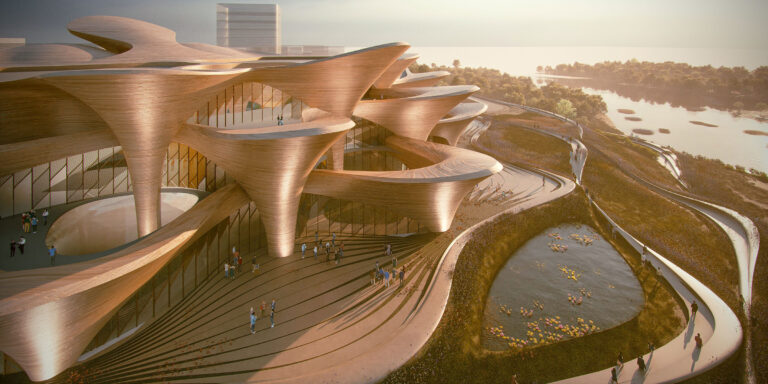
SHARE ザハ・ハディド・アーキテクツによる、ウズベキスタンの「アリシェル・ナヴォイ国際科学研究センター」。文学博物館・研究所・学校などが組込まれる施設。地域の伝統的な建築から様々な着想を得て、換気機能を持つ“アーチ型のファサード”や“中庭” を備えた建築を考案。外壁の素材には地域産の煉瓦も用いられる




ザハ・ハディド・アーキテクツが設計している、ウズベキスタンの「アリシェル・ナヴォイ国際科学研究センター」です。
文学博物館・研究所・学校などが組込まれる施設です。建築家は、地域の伝統的な建築から様々な着想を得て、換気機能を持つ“アーチ型のファサード”や“中庭”を備えた建築を考案しました。また、外壁の素材には地域産の煉瓦も用いられます。
こちらはリリーステキストの翻訳です
ザハ・ハディド・アーキテクツ(ZHA)は、アリシェル・ナヴォイ国際科学研究センターの設計者に決定したと発表します
アリシェル・ナヴォイ国際科学研究センターには、州立文学博物館、講堂、国際研究所、学校が組み込まれる予定です。
センターのアーチ型のファサードとインテリアは、タシケントの地元の窯で焼かれたレンガで造られ、ウズベキスタンの伝統建築の豊かな幾何学に呼応し、ウズベク文学と音楽の複雑性を称えるものとなるでしょう。
パッシブデザインの原則に基づいて設計されたセンターの建築は、最小限のエネルギー消費で、来訪者、スタッフ、学生にとって最適な環境を提供します。
新タシュケントのアリシェル・ナヴォイ国際学術研究センターには、州立文学博物館と、400席の公演、イベント、会議用ホールが併設される予定です。このデザインには、国際研究センターと、ウズベク語、文学、音楽を専門とする200人の学生のための寄宿学校も含まれています。
新タシュケント(クロスワークスによる人口増加に対応するための25,000ヘクタールのマスタープラン)内の新しい文化地区に位置するアリシェル・ナヴォイ国際科学研究センターは、ウズベク文学とシャシュマカム音楽の伝統を称えています。声楽と器楽、旋律とリズム、詩の融合であるシャシュマカムのクラシック音楽の伝統は、タシュケントがその卓越した中心地として知られるウズベキスタンの文化の不可欠な一部です。
ウズベキスタンの文化遺産に多大な影響を与えた15世紀の詩人、作家、言語学者、政治家であるアリシェル・ナヴォイにちなんで名付けられた23,000㎡の国際研究センターは、文学教育、研究、舞台芸術の間の対話を促すために、さまざまな相互接続スペースを備えた設計となっています。
施設のアーチ型のファサードとインテリアは、タシュケントの地元の窯で焼かれたレンガで造られ、ウズベキスタンの伝統的建築で高く評価されている曲線幾何学と呼応しています。この地域の伝統的な建築様式のもう一つの特徴である中庭は、新しい施設にも取り入れられ、自然光と通風を確保しながら、さまざまな屋外の集いの場やプライベートな思索の場を創出しています。
タシュケントの地中海性気候に位置し、中央アジアの立地による大陸性気候の影響を受けているこの施設のデザインは、パッシブ建築の原則に基づいて設計されており、エネルギー消費を最小限に抑えながら、来訪者、スタッフ、学生にとって最適な環境を提供しています。
内部の温度をより低く保つ中央アジアや中東の伝統的建築の風の塔から着想を得て、施設を支えるアーチの幾何学形状と構成は、建物内に送風と冷却換気を行う開口部を備えた中空構造として設計されています。最も暑い月には、このシステムはファンとミストによってサポートされ、空気が建物内を循環する前に冷却されます。
風のない気象条件では、これらの中空アーチ構造が圧力勾配を生み出し、熱い空気を上方に押し出し、各アーチの上部にある開口部から暖かい空気が逃げることを可能にするサーマル・チムニー(熱煙突)が形成されます。
これらの冷却原理は、昼と夜のサイクルによって強化され、暖かい空気を排出すると同時に冷たい空気を下部に閉じ込めます。施設の構造物の高い熱容量と相まって、最小限のエネルギー消費で最適な快適性を維持することができます。中庭と天窓が、施設の中心部に自然光を導入する一方、深い屋根の張り出しにより、夏にはファサードに効果的な日よけを提供し、冬には建物内に冬の日差しを取り入れて室内を暖めることができます。
研究所の中心となる州立文学博物館では、修復ワークショップや3,500冊の歴史的書籍や原稿のコレクションを収蔵する保管庫を含む、研究、アーカイブ、展示の総合的なプログラムを提供します。中庭を囲むように13の常設展示ホールを配置したこの博物館では、ウズベク文学の数世紀にわたる歴史と、同国で最も著名な作家による現代の作品が展示されます。
シャシュマカム音楽のダイナミックなパフォーマンスから着想を得て、都市のアーティストとより幅広いコミュニティが交流できる場を創出します。施設の屋外スペースは、野外円形劇場や即興パフォーマンス用の日陰のパビリオン付き庭園を備えた、造園されたテラスの一連の流れを形作っています。
ウズベキスタンの豊かな文化遺産を祝うと同時に、その多様性と奥深さを紹介するアリシェル・ナヴォイ国際科学研究センターは、伝統的および現代的な芸術の場を組み合わせた創造性の拠点となることを目指しています。また、教育プログラムや研究プログラムの開催も目的としています。
以下の写真はクリックで拡大します













以下、リリーステキストです。
Zaha Hadid Architects (ZHA) announced as designers of the Alisher Navoi International Scientific Research Centre
The Alisher Navoi International Scientific Research Centre will incorporate the Navoi State Museum of Literature, Auditorium, International Research Centre and School.
The centre’s arched facades and interiors will be crafted from bricks produced in Tashkent’s local kilns, echoing the rich geometries of Uzbekistan’s traditional architecture and celebrating the complexities of Uzbek literature and music.
Defined by passive design principles, the centre’s architecture provides optimal conditions for visitors, staff and students with minimum energy consumption.
The Alisher Navoi International Scientific Research Centre in New Tashkent will incorporate the Navoi State Museum of Literature together with a 400-seat auditorium for performances, events and conferences. The design also comprises the International Research Centre and a residential school for 200 students specialising in Uzbek language, literature and music.
Anchoring the new cultural quarter within New Tashkent (a 25,000-hectare masterplan designed by Cross Works to accommodate the city’s growing population), the Alisher Navoi International Scientific Research Centre celebrates the traditions of Uzbek literature and Shashmaqom music. A fusion of vocal and instrumental music, melodic and rhythmic idioms and poetry, the classical music tradition of Shashmaqom is an integral part of Uzbek culture with Tashkent renowned as a centre of excellence.
Named after Alisher Navoi, the 15th Century poet, author, linguist and stateman whose works had a profound influence in the cultural heritage of Uzbekistan, the 23,000 sq.m International Research Centre has been designed with a variety of interconnected spaces to encourage dialogue between literary education, research and the performing arts.
The centre’s arched facades and interiors will be crafted from bricks produced in Tashkent’s local kilns, echoing the curvilinear geometries of Uzbekistan’s acclaimed traditional architecture. Courtyards, another defining feature of the region’s vernacular tradition, are incorporated within to new centre to provide natural light and ventilation while creating a variety of outdoor gathering spaces and areas for private contemplation.
Situated in Tashkent’s Mediterranean climate with the continental influence of its Central Asian location, the centre’s design is defined by passive architectural principles to provide optimal conditions for visitors, staff and students while minimising energy consumption.
Informed by the wind towers of Central Asian and Middle Eastern vernacular architecture that maintain cooler interior temperatures, the geometries and composition of the centre’s supporting arches have been designed as hollow structures with openings that capture the wind and channel cooling ventilation into the building. In the hottest months, this system will be supported by fans and misting to cool the air before it circulates within the structure.
In weather conditions without wind, these hollow arched structures create a pressure gradient which extracts hot air upwards, producing a thermal chimney allowing warmer air to escape through the openings at the top of each arch.
These cooling principles are enhanced by the day-night cycle, extracting warmer air while trapping cooler air below. Coupled with high thermal mass of the centre’s structure, optimum conditions of comfort can be maintained with minimal energy consumption. Courtyards and skylights bring natural light into the heart of the centre while deep roof overhangs provide its facades with effective solar shading in summer yet permit winter sun into the building to warm the interiors.
The Navoi State Museum of Literature at the heart of the institute will provide comprehensive programs of research, archives and exhibitions that include a restoration workshop and a repository housing a collection of 3,500 historical books and manuscripts. Incorporating 13 permanent exhibition halls around a central courtyard, the museum will present centuries of Uzbek literary history and contemporary works by the nation’s most renowned authors.
Taking inspiration from the dynamic performances of Shashmaqom music to create a setting where the city’s artists and wider community come together, the centre’s outdoor spaces define an sequence of landscaped terraces with open-air amphitheatres and gardens with shaded pavilions for impromptu performances.
Celebrating Uzbekistan’s rich cultural heritage, while also showcasing its diversity and depth, the Alisher Navoi International Scientific Research Centre aims to become a hub of creativity with an ensemble of traditional and contemporary venues for the arts as well as hosting educational and research programs.
■建築概要
Project Team
Design: Zaha Hadid Architects (ZHA)
ZHA Principal: Patrik Schumacher
ZHA Project Director: Paolo Matteuzzi
ZHA Design Directors: Paolo Matteuzzi, Paulo Flores
ZHA Project Architects: Effie Nakajima, Karoly Markos, Luca Ruggeri, Davide Del Giudice
ZHA Project Team: Andrei-Ciprian Cojocaru, Canon Lee, Ceren Tekin, Diego Ariza, Ekaterina Smirnova, Jose Navarrete Deza, Keyur Mistry, Ripple Patel, Sattor Jabbor, Ying Zhu
───
Consultants
Structural Engineers: Buro Happold
Environmental Consultant: Buro Happold
MEP: Burro Happold
Masterplan Consultancy: Buro Happold


